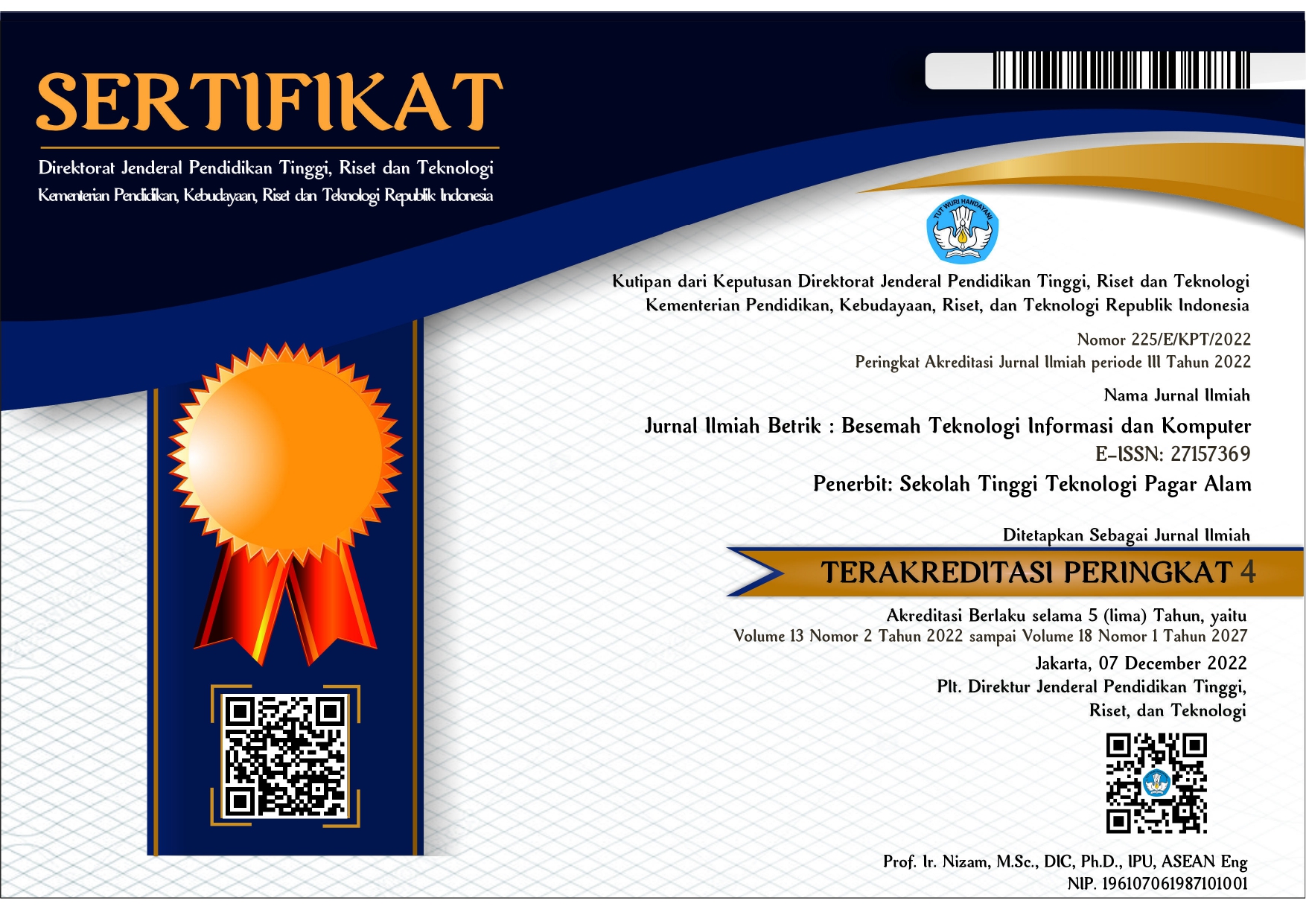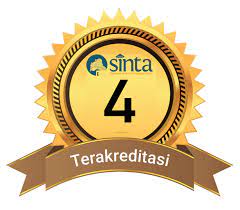ANALISIS PRODUK BINAR GO MENGGUNAKAN PRIORITIZATION MATRIKS EISENHOWER DAN MODEL KANO
DOI:
https://doi.org/10.36050/betrik.v13i03%20DESEMBER.30Abstract
Edutech startups are currently experiencing rapid development. This is because Indonesia's need for digital skilled workers reaches 9 million people in 2030. One way to be able to print digital skilled workers is to facilitate learning according to industry needs. One of the edutech startups whose goal is to produce quality young people is Binar Academy. Various courses are provided at varying prices. The courses available at Binar Academy are Product Management, Frontend, Backend, Android Developer, UI/UX Designer and others. One of the newest products, Binar Go, provides interesting and flexible learning according to the needs of today's young generation. The Binar Go product in the product management course has a huge opportunity to increase digital skilled workers. Especially for the younger generation who will enter the industrial world. This research uses mixed methods, namely quantitative and qualitative methods. In a survey conducted, 55% of users said there were several obstacles when using the Binar Go android application that caused users to feel uncomfortable. To solve these problems, it is necessary to improve the product, one of which is by creating new features. Therefore, the researcher uses the prioritization of the Eisenhower Matrix and the Kano model in determining the priority of features that can increase user comfort when using the Binar Go product. The Eisenhower matrix is a way that can be done in determining the priority of a job, while the Kano model is a diagram that can help prioritize consumer needs in more detail. By using the prioritization of the Eisenhower Matrix and the Kano model, 3 main features are obtained, namely the Search Bar feature, the Save Material feature, and the Black Mode feature. These features must be developed immediately to be able to increase user convenience in making purchases on Binar Go products on the Binar Academy Android Application.
References
H. Gunawan, “Fenomena Startup Fintech dan Implikasinya,” Swara Patra, vol. 8, no. 4, pp. 44–55, 2018, [Online]. Available: http://ejurnal.ppsdmmigas.esdm.go.id/sp/index.php/swarapatra/article/view/11/10
L. V. Hignasari, “Analisis Peningkatan Industri Start Up Di Bidang Pendidikan Selama Masa Pandemi Covid-19,” J. Ilm. Vastuwidya, vol. 4, no. 1, pp. 50–58, 2021, doi: 10.47532/jiv.v4i1.251.
D. Astuti, Wasidi, and R. Sinthia, “ISSN 2599-1221 (Cetak) ISSN 2620-5343 (Online) https://ejournal.unib.ac.id/index.php/j_consilia,” J. Cons., vol. 2, no. 1, pp. 66–74, 2019, [Online]. Available: https://ejournal.unib.ac.id/index.php/j_consilia
D. Esterlina Br Jabat and V. Saragih, “Perkembangan Startup Teknologi Pendidikan (EdTech) di Masa Pandemi Covid-19,” SKYLANDSEA Prof. J. Ekon. Bisnis dan Teknol., vol. 1, no. 2, pp. 75–80, 2021.
A. Assyifa, “Urgensi Regulasi Khusus tentang Perusahaan Rintisan ( Startup ) dalam Rangka Pengembangan Ekosistem Perusahaan Rintisan di Indonesia,” J. Jentera, vol. 4, no. 1, pp. 458–478, 2021.
I. L. Paragon and A. R. Reserved, ISBN : 978-623-99072-0-4.
N. M. Efendi, “Revolusi Pembelajaran Berbasis Digital (Penggunaan Animasi Digital Pada Start Up Sebagai Metode Pembelajaran Siswa Belajar Aktif),” Habitus J. Pendidikan, Sosiologi, Antropol., vol. 2, no. 2, p. 173, 2019, doi: 10.20961/habitus.v2i2.28788.
A. Sayekti and L. Kartika, “Perancangan Model Peningkatan Kapasitas Sumber Daya Manusiadi Bank Perkreditan Rakyat (BPR),” J. Apl. Manaj., vol. 14, no. 2, pp. 217–232, 2016, doi: 10.18202/jam23026332.14.2.04.
B. W. Khairunnisa, “Model Concurrent Transformative dalam Desain Metode Penelitian Campuran: Sebuah Pengenalan,” Syntax Idea, vol. 3, no. 9, p. 2072, 2021, doi: 10.36418/syntax-idea.v3i9.1488.
Ninik Supriyati, “@article{creswell2016research, title={Research design: pendekatan metode kualitatif, kuantitatif, dan campuran}, author={Creswell, John W}, journal={Yogyakarta: Pustaka Pelajar}, pages={5}, year={2016} },” Metod. Penelit. Gabungan (Mixed Methods), vol. 1, pp. 1–24, 2015.
M. R. Fadli, “Memahami desain metode penelitian kualitatif,” Humanika, vol. 21, no. 1, pp. 33–54, 2021, doi: 10.21831/hum.v21i1.38075.
H. Bratterud, M. Burgess, B. T. Fasy, D. L. Millman, T. Oster, and E. (Christine) Sung, “The Sung Diagram: Revitalizing the Eisenhower Matrix,” Lect. Notes Comput. Sci. (including Subser. Lect. Notes Artif. Intell. Lect. Notes Bioinformatics), vol. 12169 LNAI, no. January 2021, pp. 498–502, 2020, doi: 10.1007/978-3-030-54249-8_43.
P. Batra, “Eisenhower Box for Prioritising Waiting List of Orthodontic Patients,” Ohdm, vol. 16, no. 1, pp. 1–3, 2017.
H. J. Harrington, “Kano Model,” Tech. Sample Outputs that Drive Bus. Excell., vol. 15, no. 2, pp. 146–149, 2020, doi: 10.1201/b18008-27.
J. Sistem, J. T. Industri, F. Teknik, U. Kadiri, and J. S. No, “Klasifikasi Atribut Pelayanan Mobile Banking dengan Kano Model Berdasarkan Dimensi E-Servqual Imam Safi ’ i,” vol. 2, no. 2, pp. 77–84, 2018.
Downloads
Published
How to Cite
Issue
Section
License
Copyright (c) 2023 Renisa Nur Kamelia Putri, Dian Permata Sari, Rian Andrian

This work is licensed under a Creative Commons Attribution 4.0 International License.
















